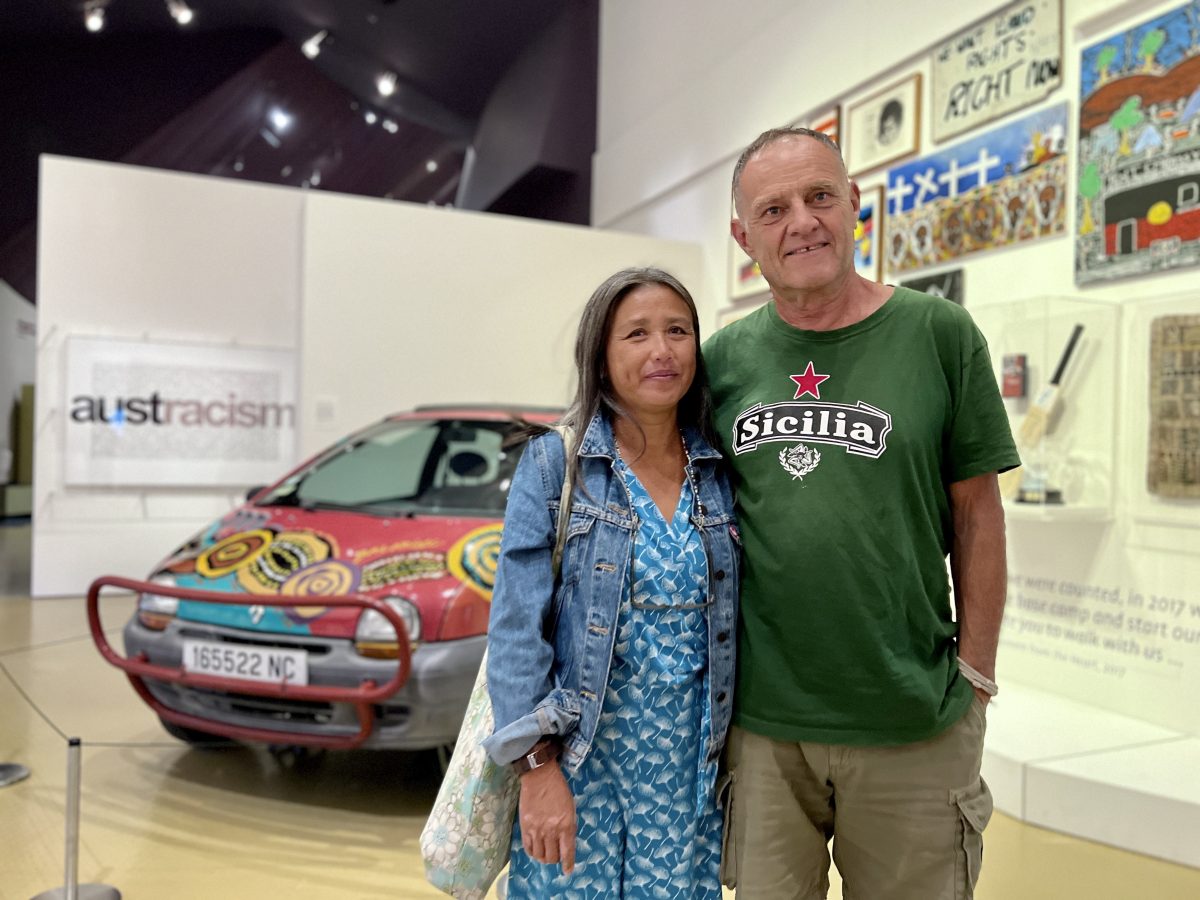
Jean Dulon and his wife, by the Renault Twingo, wrapped in Aboriginal ‘Balarinji’ designs at the National Museum of Australia. Photo: James Coleman.
Under normal circumstances, visitors to the National Museum of Australia can’t just skip under the rope barriers and touch the exhibits, let alone open the door of the Renault hatchback in the Balarinji Art Collection and climb inside. And then fold back the sunroof and sling a casual arm out the door.
But security guards turned a blind eye when Jean Dulon was in town for the first time in nearly three decades. After all, it was his car.
The French journalist and his wife brought the left-hand-drive Renault Twingo to Australia in 1994 to film a road trip across Australia from Sydney to Uluru.
“I wanted to create an encounter between something infinitely small like the Twingo and something infinitely big like Australia,” he said.
The numbers were formidable: 25,000 kilometres, including 8000 on unsealed roads and tracks, over 55 days in a two-wheel-drive, one-point-something-litre engined car developing 60 horsepower (maybe).
Renault in New Caledonia prepped it with tougher tyres, a metal tray to shield the undercarriage, and a roo bar on the front, but it was no sure thing the little Twingo would make it.
“When you reach 130 km/h in that you’re limited because you know if you do something wrong, you’re finished,” Jean said.
“You also have 630 km without a petrol station, knowing the range of the car is 570. I didn’t want to carry a jerry can because it smells in the car, so I had to be careful with the accelerator.”

The Renault Twingo, all 3.6 metres of it. Photo: James Coleman.
The film crew tailed them in a more appropriately kitted-out 4WD, complete with mechanics.
“I had some spares with me, but with any more than changing tyres, I’m very bad,” Jean said.
“I’m a driver. That’s it. I need two other mechanics with me.”
But he almost needn’t have bothered. Apart from their trailer going missing in Broome at the top of Western Australia, there wasn’t so much as a flat tyre.
“Fantastically, we didn’t have any problems at all,” Jean said.
In fact, this Twingo went all the way through Cape York Peninsula to the northernmost tip of Australia.
“Filming was the roughest part because we had to stop every day for that.”
Jean had loved the idea of Australia ever since his father had taken him to the local embassy in France and promised him a trip if he passed all his school exams.
“I don’t know what happened with the exams, but I didn’t go because it was too far away. But it was still in my mind.”
As a journalist, he covered a range of topics in print and then on TV, but up until his tour, he really only knew of “new Australia”.
“When I did this tour, the Aboriginal people were in my heart and mind, and … I wanted the car to speak out,” Jean said.
“I wanted to drive the car and talk to people about what is Australia and open the door to speak out. That was one of the goals.”

Don’t do this to museum exhibits. Photo: James Coleman.
For this, the car needed an appropriate “skin”. While travelling along the west coast, Jean stopped at the NT town of Borroloola along the Gulf of Carpentaria, where he met John Moriarty, the perfect man to give it that skin.
John was a member of the Stolen Generation, taken from his mother at the age of four. He went on to become the co-owner of Balarinji Designs, a Sydney-based Indigenous design agency most famous for decorating five Qantas Boeing passenger jets in the 1990s.
On Jean’s return to Sydney at the end of the tour, Moriarty agreed to allow airbrush artist Frank Lee to paint the Twingo in the ‘Wunala Dreaming’ design, the same one draped over one of Qantas’s Jumbos. It’s said to be inspired by the natural colours of Australia – “the red of Uluru, the blue-purples of the Flinders Ranges and the green of Kakadu”.
“It had to perspire Australia to show it,” Jean said.
“From the beginning, I wanted to have that. I couldn’t imagine this adventure without having this [artwork] part of it.”
When the car returned to France with Jean and his wife, Renault ran a nationwide ad campaign with the slogan: “The Twingo is like a boomerang. No matter how far you send it, it keeps coming back”. There were even 10,000 Dinky toy cars made.
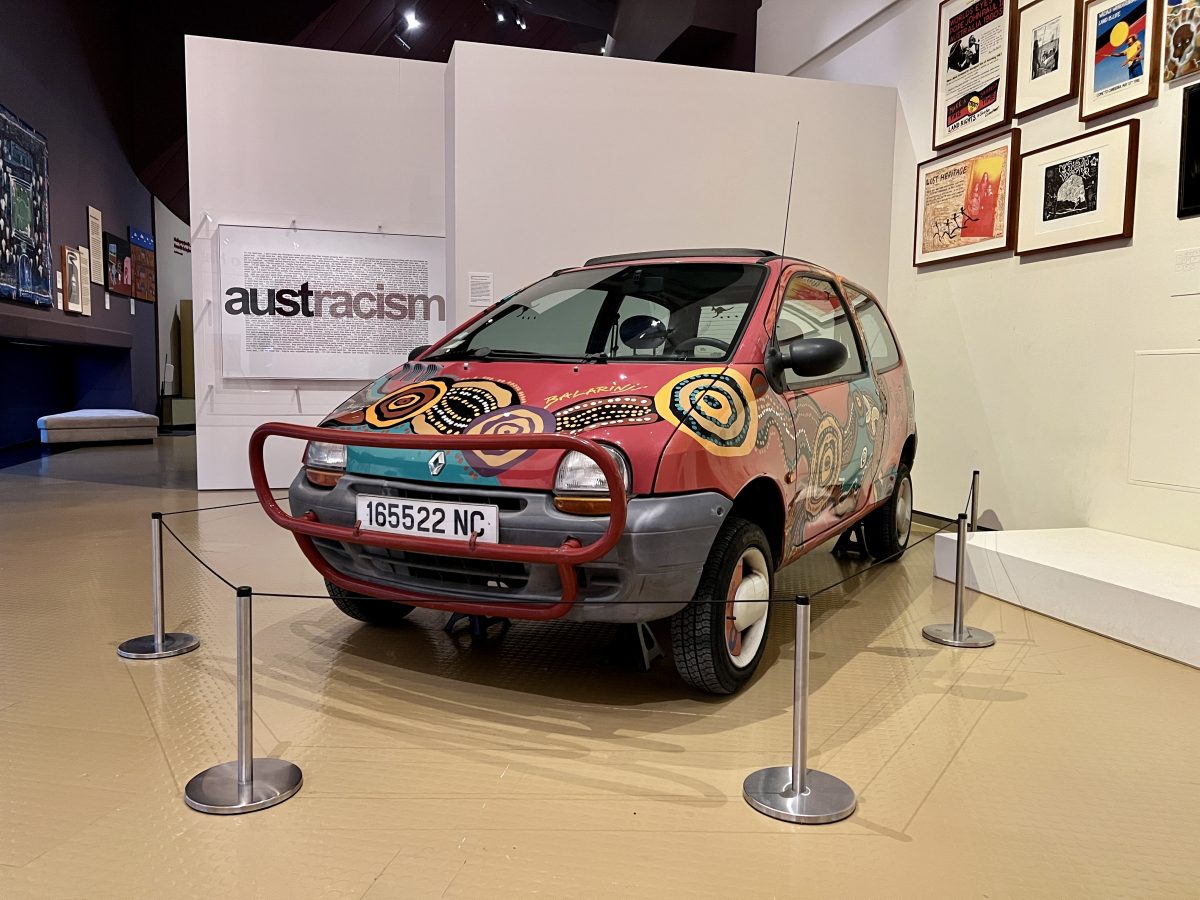
Far from being protected as it is today, the car “slept outside” in France. Photo: James Coleman.
Jean took it back at the end and continued to drive it for many years.
“We went all over the place, Italy, Spain, Germany, Holland – it was my car,” he said.
“People thought it was in a garage, all protected, but nothing like that. It slept outside. Sometimes, I forgot the keys in the ignition because my mind sometimes flies away. Nothing happened.”
The car was acquired by the National Museum of Australia in 2016 as part of the ‘The Barinji Collection’, starring the work and life of John Moriarty. Jean couldn’t be happier.
“Now I know it’s well kept here and I’m very happy it’s safe.”
You can relive Jean’s travels on YouTube.
Original Article published by James Coleman on Riotact.


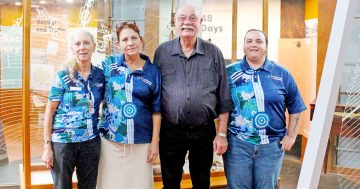
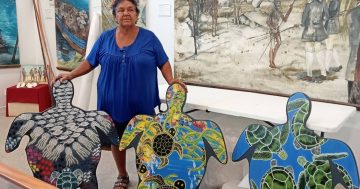


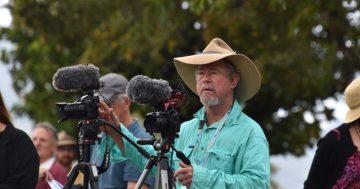
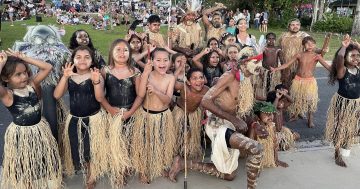


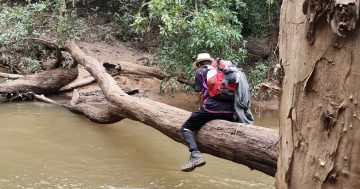

Hi Sally, have you contacted Council at [email protected]? Staff don't monitor Facebook groups… View